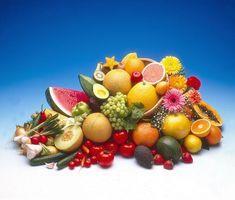
Being the middleman has never been an easy job, and as we venture into what is predicted to be a double-dip recession, the task won’t get any easier.
Making sure you are ahead of your game regarding both your product and the way you conduct business, as well as working together under producer organisations or as part of co-operatives, could be essential to keeping your head above water.
A point of difference
“How can importers thrive in today’s climate?” asks Tim Barnes of T&JB Produce, a Total Produce company. “They can’t. They can survive only if they are agile and nimble and prepared to invest money in R&D and varietal development.”
Barnes says that importers have to be “stronger” and get better at saying no to low prices. “We also need to be more vertically integrated in the growing side,” he says. “Investing money into the growers and giving them technical support is crucial.”
It’s true that importers thrive on offering sustainable crops that have a point of difference, as well as providing a service the customer can’t do without. “We are the only global watercress producer that owns farms on three continents,” says Tom Amery, MD of The Watercress Company. “This gives us a huge opportunity as we can choose when we produce crops in order to offer our availability right at the point when it is needed to keep the UK healthy. In order to get commitment from third-
party suppliers you need to complete annual contracts of production, but as we own our businesses we look for a multi-year strategy so we can invest in aspects that make a difference.”
Make an impression
Getting closer to your customer is without doubt the number-one objective, adds Amery. “Importers offer an opportunity to satisfy a demand and that demand is created by interest in produce,” he continues.
Another way of making an impression is supplying a brand. Offering a brand that becomes synonymous with quality and consistency can mean that eventually the product will sell itself. “When a new brand comes in [to a wholesale market], it causes much excitement, but be selective with whom you place that brand to maintain strong price,” warns New Covent Garden Market’s BDM Zeenat Anjari. “Otherwise, your brand becomes the pressure point for price cutting.”
Exploring routes to market
But are importers active enough in the wholesale markets? Not any more, claims Anjari. “There’s a lot of ancient marketing material on buyer’s walk from when the marketing boards really targeted the wholesale customer,” she says. “Because of the efficient chain between wholesaler and end user, the latter can experience your product at its best, with less time spent hanging around in a warehouse.”
But Barnes feels that an old-fashioned perception of the wholesale markets holds them back. “A lot still see wholesale as a dumping ground for when there is a glut or distressed fruit - and caterers are very hard to make money out of with fixed prices. Somebody is always unhappy in that situation, whether it’s the importer who is underselling or the receiver who feels they are overpaying.”
But the modern wholesale market creates food trends through its high-profile, highly-communicative catering customers. “Give them something new to try, whether it’s a new brand, new packaging, a new variety or a new format, and they will talk about it with their peers, especially on social media,” explains Anjari. “This gets picked up by journalists and suddenly a new trend is created. But you have to give the wholesalers information they can pass on to their catering customers.”
Working collaboratively
Strength in numbers and therefore emphasising your power and reach seems to work well in the fresh produce industry, which has seen producer groups thrive and therefore increase in number. The latest is a new agreement between two well-established companies, G’s Fresh and Langmead Farms, which sees The Lettuce Company joining G’s Growers Limited Producer Organisation.
The Watercress Company, which has imported watercress from Florida and Spain for the last 16 years, has gained a great deal from being with The Watercress Alliance. “Producer groups are excellent and have worked for us for the last 10 years,” says Amery. “Combining resources for promotions and PR is very effective, but it relies on a generic approach. Consumers can be a little confused and humoured by terms like The Watercress Alliance, which needs to be considered, but understanding growers and their stories is very effective.”
Some believe that producer organisations and producer groups are one way of overcoming the multiples’ dominance in the supply chain. “There is a step change in the way that retailers view their supply base,” says horticultural consultant Sarah Calcutt. “The higher end of the retailer group will increasingly want to get involved with their supply base, with stronger partnerships between large producer groups and marketing organisations leading the way.”
But collaboration means just that, and Anjari reminds that to retain independence, producer groups need to include the wholesale markets in any development plan. “The market is not just as a valve for oversupply or outgraded produce, but a route to the influential foodservice customer,” she says. “It is where trends are made.” -